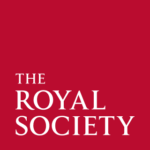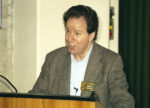From its earliest days the LMB has attracted and trained first class scientists from around the world – creating a diverse community for the exchange of ideas and technical innovation. The LMB provides excellent opportunities for early career and established researchers – people with the potential to lead their field. A high percentage of LMB students and post-docs stay in research or science related fields after they leave the LMB. The LMB supports the wider scientific community by supplying highly trained scientific leaders. They leave the LMB to develop and support molecular biology both in the UK and throughout the world.
The Royal Society awards the Francis Crick Medal and Lecture 2023 to Tiago Branco

LMB 2012-2016, Group Leader, Neurobiology
Tiago Branco is the 2023 recipient of The Royal Society’s Francis Crick Medal and Lecture in recognition of his research into molecular, cellular and circuit bases of neuronal computation, and his successes in linking these to decision behaviour in animals. This award is given in honour of Francis Crick and was endowed by Sydney Brenner, both LMB alumni. More…
Vernon Ingram. 19 May 1924 – 17 August 2006
LMB 1952-1958, Scientific Staff
Vernon Ingram, born in Germany, was a protein chemist who helped advance the field of protein crystallography and made important contributions to the understanding of human haemoglobin diseases. In 1952, he joined the MRC Unit for the Study of Molecular Structure of Biological Systems (now the MRC Laboratory of Molecular Biology), where he worked for six years before leaving to join the Massachusetts Institutes of Technology in 1958. His Royal Society Biographical Memoir, written by LMB emeritus scientists John Kilmartin and Tony Crowther, has recently been published. More…
From the LMB to Silicon Valley: Inja Radman discusses her career

LMB 2011-2016, PhD Student, Investigator Scientist, PNAC
Inja Radman discusses her career so far with Women Ahead of Their Time (WATT), including the “fantastic time” she spent as a PhD student and Investigator Scientist in Jason Chin’s group in the LMB’s PNAC Division. More…
Salmonella and me: Emma Werner’s video on Salmonella infection in the gut is a Top 10 Finalist in Nature Awards’ Science in Shorts competition
LMB 2015-2019, PhD Student, PNAC
Former PhD student, Emma Werner, from Felix Randow’s group, explains her 2021 Springer Nature journal publication on antibacterial cell-autonomous immunity with a short video, ‘Salmonella and me’, which was selected as a Top 10 Finalist. Congratulations, Emma! More…
Ruth Lehmann receives Vanderbilt Prize in Biomedical Science
LMB 1987-1988, Postdoctoral Visitor, Cell Biology
Ruth Lehmann is the 2022 recipient of the Vanderbilt Prize in Biomedical Science, given to women with outstanding research accomplishments and established history of mentorship of women in science. Ruth was a Postdoctoral Visitor with Michael Wilcox and Peter Lawrence in the Cell Biology Division, and is now the Director of the Whitehead Institute for Biomedical Research in Cambridge, Massachusetts. Her research specialises in the biological origins of germ cells and how they transmit organism potential to daughter cells. More…
Sidney Altman 1939 – 2022

LMB 1969-1971, 1978, Postdoctoral Research Fellow, Scientific Visitor, Cell Biology
Sidney Altman was a ground-breaking scientist in the field of RNA biology, whose discovery of catalytic properties of RNA led to the award of the Nobel Prize in Chemistry in 1989. His first steps to this discovery began at the LMB, where he worked alongside Sydney Brenner and Francis Crick, research that led to the discovery of RNaseP. After moving to Yale, Sidney and his colleagues unveiled the enzymatic properties of the RNA subunit of that enzyme. He remained a friend to many at the LMB and in Cambridge. More…